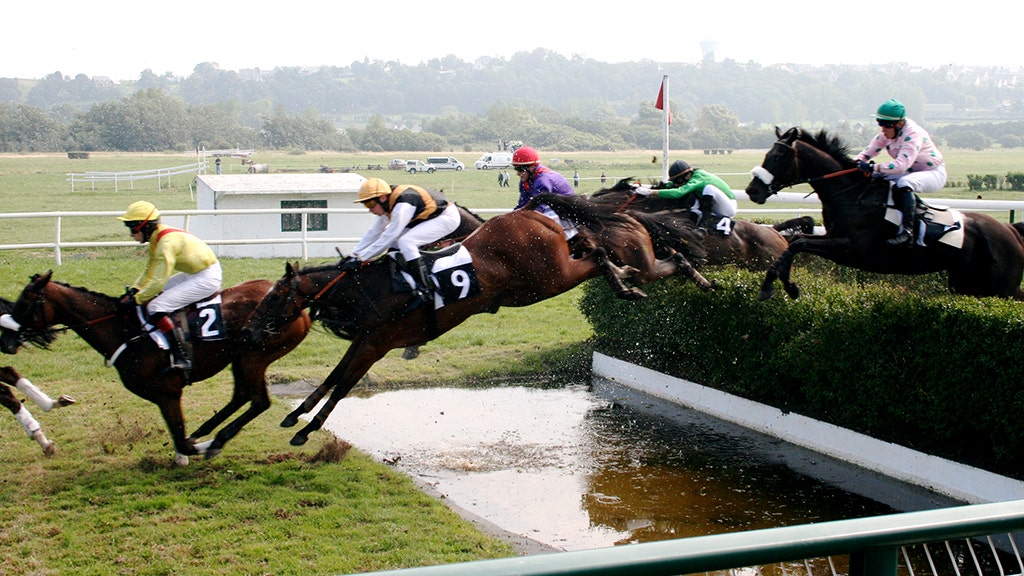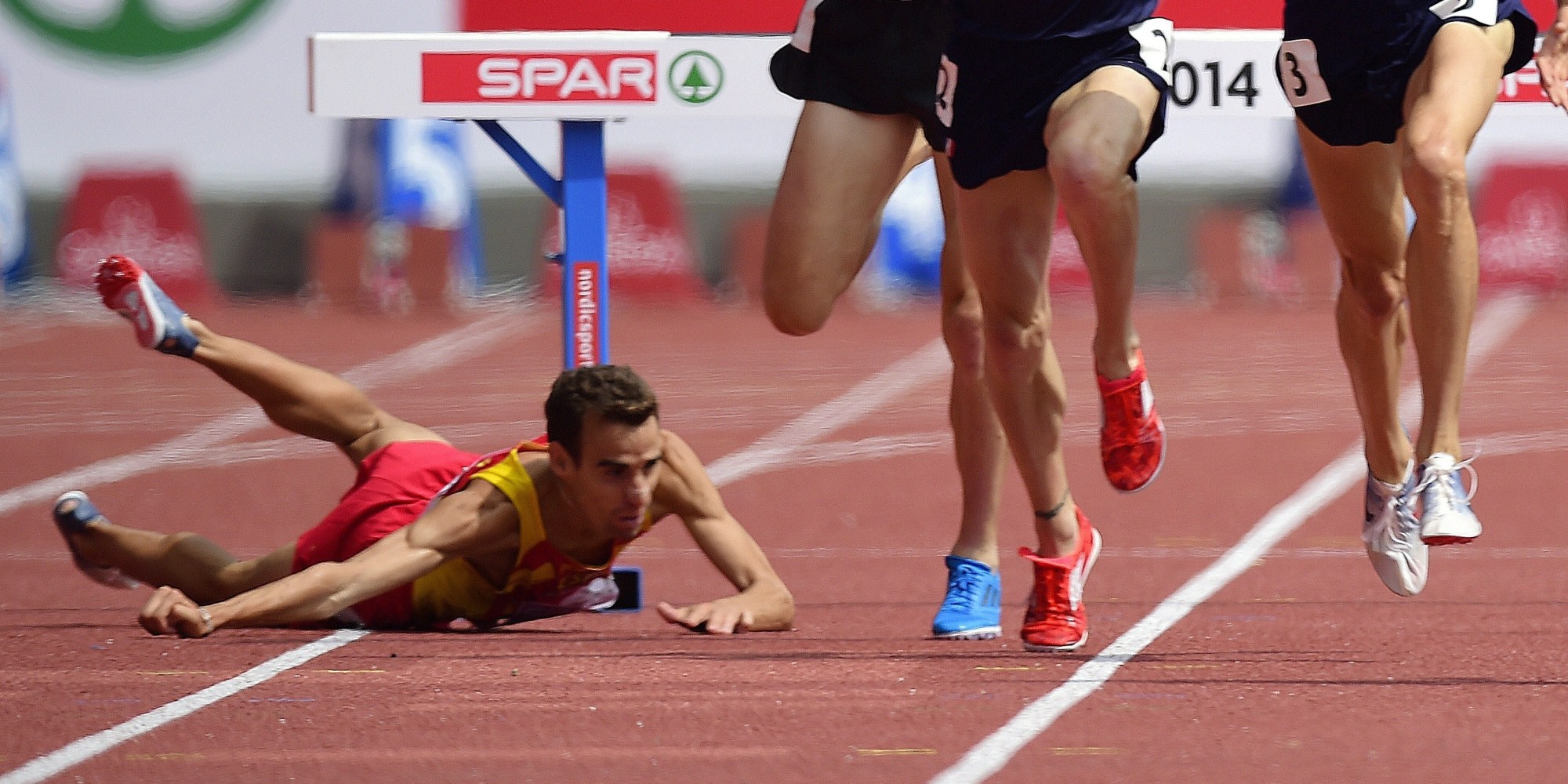The Mechanics of a Steeplechase Fall

Steeplechase racing is a thrilling spectacle of horse and rider teamwork, but it’s also a sport with inherent risks. Falls are a common occurrence, and they can have serious consequences for both horse and rider. Understanding the mechanics of a steeplechase fall is crucial for appreciating the dangers and the skill required to navigate this demanding discipline.
Types of Steeplechase Falls
The nature of a steeplechase fall can vary widely, influenced by factors like the terrain, the horse’s behavior, and the rider’s actions. Here are some common types of falls:
- Stumble and Fall: This is perhaps the most common type of fall, occurring when a horse loses its footing on uneven ground or while negotiating an obstacle. Stumbles can be caused by a variety of factors, including fatigue, uneven footing, or the horse’s own awkwardness.
- Jump Fall: These falls occur during the act of jumping, often when the horse misjudges the distance or the landing. The horse might land awkwardly, lose its balance, or even refuse the jump altogether, resulting in a fall.
- Rider Error: Rider error can contribute to falls, particularly when the rider loses their balance, makes a poor decision, or fails to anticipate the horse’s movements. This can lead to the rider being unseated or even thrown from the horse.
- Horse Error: Sometimes, the horse itself is the cause of the fall. This might be due to a sudden fright, a physical injury, or even a loss of focus. Horses can also become agitated or confused during the race, leading to unpredictable behavior that could result in a fall.
Causes of Steeplechase Falls
Several factors contribute to falls in steeplechase racing, and understanding these causes is essential for safety and prevention:
- Rider Error: Poor riding technique, lack of experience, or failure to anticipate the horse’s movements can all lead to falls. For example, a rider who doesn’t maintain a secure seat could be unseated by a sudden movement or a jump. A rider who doesn’t know the course well might misjudge obstacles, leading to a fall.
- Horse Error: Horses are athletes, and like any athlete, they can experience fatigue, injury, or behavioral issues that might contribute to falls. A tired horse might stumble, an injured horse might be unable to jump properly, and a frightened horse might bolt or refuse an obstacle.
- Course Obstacles: Steeplechase courses are designed with challenging obstacles, such as fences, water jumps, and ditches. These obstacles are a significant source of falls, especially when horses misjudge the distance or the landing.
- Weather Conditions: Wet or slippery ground, strong winds, or heavy rain can make the course more challenging and increase the risk of falls.
Famous Steeplechase Falls
Throughout history, steeplechase racing has seen its share of dramatic falls, some of which have become legendary:
- Red Rum’s Fall in 1974: Red Rum, one of the most famous steeplechasers of all time, suffered a dramatic fall in the 1974 Grand National. He was leading the race when he stumbled and fell at Becher’s Brook, a notoriously challenging obstacle. Despite the fall, Red Rum recovered and went on to win the race for a third time, solidifying his place in racing history.
- The Fall of the “Flying Finn” in 1992: Finnish jockey Matti Alatalo, known as the “Flying Finn,” was a legend in steeplechase racing. In 1992, he suffered a serious fall during the Grand National, sustaining injuries that ultimately ended his career. The fall was a stark reminder of the dangers of this demanding sport.
The Impact of Falls on Riders and Horses: Steeplechase Fall

Steeplechase, a thrilling equestrian sport, is known for its challenging courses and high speeds. While riders and horses experience the exhilaration of racing, the inherent risks associated with the sport cannot be ignored. Falls are a common occurrence, and the consequences can be significant, impacting both the rider and the horse.
Injuries Sustained from Falls
Falls in steeplechase can result in a wide range of injuries for both riders and horses.
- Riders: Riders are at risk of sustaining head injuries, including concussions, fractures, spinal injuries, and even fatalities. They can also experience injuries to their limbs, such as broken bones, sprains, and dislocations.
- Horses: Horses are susceptible to injuries such as broken legs, lacerations, and internal bleeding. They may also suffer from concussion, which can lead to neurological problems.
Safety Measures to Mitigate Risks
Recognizing the potential for falls and injuries, several safety measures are implemented to mitigate the risks:
- Protective Gear: Riders are required to wear helmets, body protectors, and other protective gear to minimize the impact of falls.
- Course Design: Steeplechase courses are designed with safety in mind, incorporating features like fences, water jumps, and turns that are strategically placed to minimize the risk of falls.
- Medical Personnel: Trained medical personnel are present at all steeplechase events to provide immediate medical attention in case of an accident.
- Horse Welfare: Veterinarians are on hand to assess the horses’ health and well-being, ensuring they are fit to compete. Regular veterinary checks are conducted to identify potential health issues that could increase the risk of falls.
Psychological Impact of Falls, Steeplechase fall
Falls can have a significant psychological impact on both riders and horses.
- Riders: Riders may experience fear, anxiety, and a loss of confidence after a fall. This can lead to a reluctance to return to racing, impacting their careers and mental well-being.
- Horses: Horses can develop a fear of fences or other obstacles after a fall. This can lead to reluctance to jump, impacting their performance and potentially their future career prospects.
The Role of Falls in Steeplechase History and Culture

Falls have always been an inherent part of steeplechase racing, shaping its history, influencing its culture, and pushing the boundaries of safety measures. These dramatic events have become woven into the fabric of the sport, leaving an indelible mark on its evolution.
Significant Falls in Steeplechase History
Falls in steeplechase racing have not only been a part of the sport but have also played a crucial role in shaping its history. These dramatic incidents have often led to rule changes and safety advancements, demonstrating the sport’s constant adaptation to mitigate risks.
- The Grand National 1928: The tragic death of jockey Freddie Fox in the 1928 Grand National, a race known for its challenging course, led to the introduction of stricter safety regulations for jockeys, including mandatory helmet use. This incident marked a turning point in the sport, highlighting the need for enhanced safety protocols.
- The Cheltenham Gold Cup 1997: In the 1997 Cheltenham Gold Cup, a mass fall involving multiple horses and riders brought attention to the need for better fence design and course management. This incident prompted the implementation of changes in fence construction and racecourse maintenance, aiming to minimize the risk of falls.
- The Grand National 2012: The tragic death of jockey Liam Treadwell in the 2012 Grand National, where he fell from his horse and was fatally injured, further underscored the inherent dangers of the sport. This incident sparked a debate about the ethics of steeplechase racing and the balance between tradition and safety.
Attitudes Towards Falls in Different Steeplechase Cultures
Attitudes towards falls in steeplechase racing vary across different cultures. While some embrace the inherent risks as part of the sport’s thrill, others advocate for increased safety measures to minimize the dangers.
- The United Kingdom: Steeplechase racing in the United Kingdom has a long and storied history, with a strong emphasis on tradition. While acknowledging the risks, many British fans and enthusiasts view falls as an unavoidable part of the sport, often citing the courage and skill of riders who navigate the challenging courses.
- The United States: Steeplechase racing in the United States has a more modern approach, with a greater emphasis on safety and welfare. While acknowledging the sport’s inherent risks, American enthusiasts often prioritize safety protocols and advocate for measures to minimize the likelihood of falls.
- France: Steeplechase racing in France, known for its demanding courses and technical challenges, has a culture that celebrates the skill and daring of riders. However, the French authorities are also known for their rigorous safety standards and strict enforcement of regulations, ensuring the sport is conducted with a balance of tradition and safety.
Evolution of Safety Measures in Steeplechase Racing
The history of steeplechase racing is closely intertwined with the evolution of safety measures designed to minimize the risks associated with falls.
| Year | Safety Measure | Description |
|---|---|---|
| 1928 | Mandatory helmet use for jockeys | Following the tragic death of Freddie Fox in the 1928 Grand National, mandatory helmet use for jockeys was implemented, significantly reducing head injuries. |
| 1997 | Improved fence design and course management | The mass fall in the 1997 Cheltenham Gold Cup led to improvements in fence design, focusing on safer materials and construction techniques. Course management practices were also enhanced to minimize potential hazards. |
| 2000s | Introduction of safety vests for jockeys | The widespread adoption of safety vests for jockeys, equipped with impact-absorbing materials, provided additional protection during falls, reducing the severity of injuries. |
| 2010s | Advanced horse safety equipment | The development of advanced horse safety equipment, such as protective boots and specialized saddles, has further reduced the risk of injuries to both horses and riders during falls. |
A steeplechase fall can be a jarring experience, both physically and emotionally. The sudden loss of control and the impact of the fall can leave athletes feeling vulnerable and shaken. Witnessing the girma steeplechase fall is a reminder of the inherent risks involved in this demanding sport.
It’s important to remember that even with the best training and preparation, unexpected events can occur, and it’s crucial for athletes to approach steeplechase with a healthy respect for the potential dangers.
A steeplechase fall can be a jarring experience, both physically and emotionally. It’s a stark reminder of the inherent risks involved in this demanding sport. The adrenaline rush of the race can quickly turn into a moment of vulnerability as you navigate the challenging obstacles.
It’s important to understand the potential for falls, and to prepare for them both mentally and physically. Steeplechase falls are often unavoidable, but learning to manage the mental and physical challenges of the sport can help you bounce back stronger after a fall.